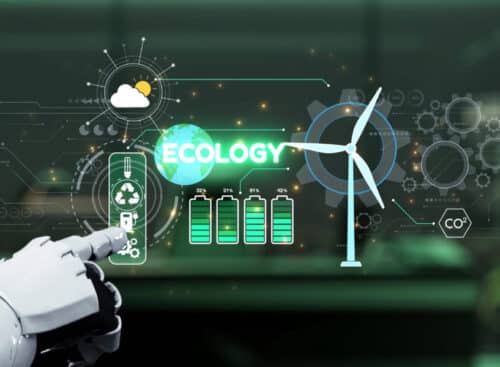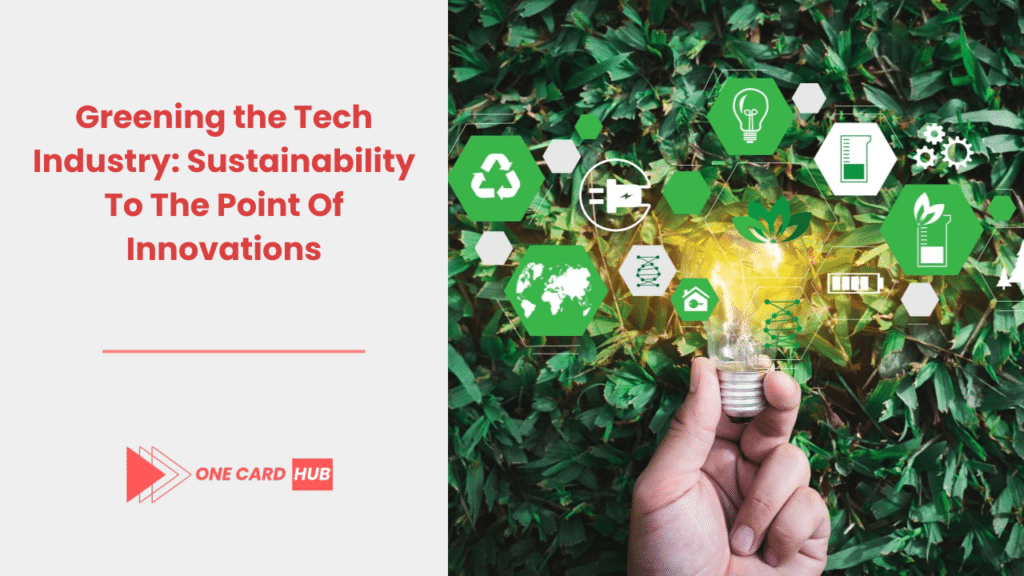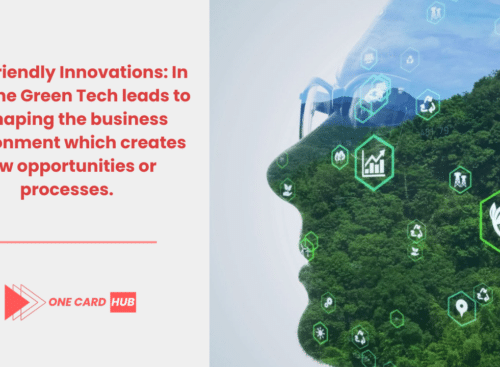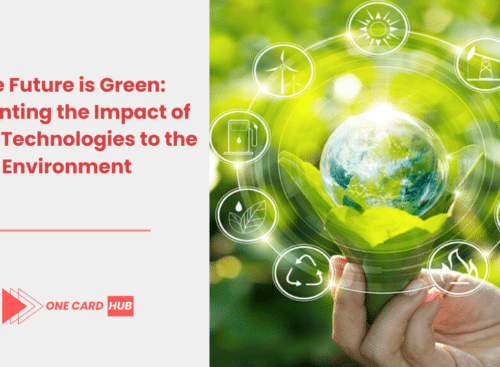
Greening the Tech Industry: Sustainability To The Point Of Innovations

Tech industry bears the brunt of development in the industry, on the edge , but nearly every economic sector of the global economy is benefiting from it. Nevertheless, this abundance of advancement goes hand in hand with a devastating environmental toll in terms of energy consumption to mountains of e-waste. This kind of information gradually lets a lot of people realize that we need to change towards more sustainable living habits. The current discourse highlights the revolutionary breakthroughs in the tech industry and the approaches that have contributed to the growing environmental friendliness instead of only the measures that address the environmental impact.
Embracing Renewable Energy
The most fundamental change a gree tech industry may need to go through is the shift into using renewable sources of energy. Not only do business units at the international level invest in wind, solar and hydroelectric power, but their contribution is also enormous, hence the reduction of the carbon footprint. Since the big and energy-consuming data centers came into service, the so-called green energy solutions, which are used to power the servers, cooling systems, and infrastructure, have come into play. As a result of this, in addition to keeping the environment clean, brand reputation is also improved and according to the consumer expectations, this also helps in meeting the requirements of ethical corporate behavior.
Advancing in Energy-Efficient Technologies
Adoption of innovation energy conservation adoption is paramount in enhancing the tech sector’s environmental effects. Designers of products have been making them use less energy while maintaining their effectiveness at the same time - from low-power semiconductor chips to power economizing modes in electric devices. These developments allow for lengthening the product lifespan and energy efficiency of products, adding up to a more sustainable world of tech.
Promoting a Circular Economy
The concept of a circular economy where the reuse, recycling and repurposing of electronic equipment becomes the core is something that is also coming into the limelight in the tech industry. Companies have to develop policies of buyback of used products which are refurbished by then and the repacked subsequent sale into the market. This measure is twofold as it decreases the amount of e-waste but also preserves resources while giving consumers financial products to opt for instead of new gadgets. Adapting circular economy models can be one of the major steps that the tech sector can go a long way in minimizing its ecological imprint and ultimately sustainability.
Developing Sustainable Materials
Investment in research of conditionally ones resources is transforming tech product's engineering processes. Biodegradable materials and non-toxic options are now utilized during the production process, therefore minimizing the extent to which e-waste causes harm to the environment. Inventions like organic electronics and green packaging constitute some of the most obvious manifestations of the industry’s commitment to environmental sustainability in the production process, which does not detract from the overall quality of the product.
Encouraging Responsible Consumption
The technological segment also finds itself under the spotlight, as it’s another sector that offers different incentives and encourages the sustainable lifestyle among the consumers. Educational campaigns and the promotion of eco-friendly alternatives put forward by the top tech companies are creating a shift in consumer perception and culture regarding the adverse environmental consequences linked to technology. Providing software updates as well as repair services lengthens devices life by making consumers updates no need to replace frequently and less waste generated. The greening of the tech industry is a multi-faceted endeavor wich the members of business, consumption and policymakers must co-operate each other to achieve this aim. Technological innovations helps improve energy distribution through renewable energy, energy-efficient technologies, circular economy, sustainable materials and their promotion to make the industry more sustainable. In addition to those initiatives, ecological protection has also opened new economic opportunities including innovations which are non-destructive to the environment. The continued evolution of technology industry can provide a leadership to be demonstrated where tech advancement and environment conservation are realized not as a contradiction.
Implementing the role of AI in the area of ecological sustainability.
The tech industry utilizes Artificial Intelligence (AI) on the leading trend in yielding the least environmental dangers. AI algorithms streamline energy utilization by data centers, foresees maintenance for minimum hardware malfunction, and controls logistics to minimize the carbon emission figures. In addition, AI provides the necessary tools for renewable resource management to predict demand and to maximization of energy distribution in terms of sustainability. Through using AI potential, technological industry can regulate their ecological footprint and also be the pathfinders of new ideas about green world.
Encouraging Shared Approaches as a Fundamental Strategy for Sustainable Development
Partnership is the focus point of creating a sustainable environment for industries who are involved with technology. Companies undertake joint ventures in inclusive alliances and cooperative groups to create common standards for sustainability, to support the development of new green technologies, and to jointly invest in them. It is by this sort of multiparty operation that already existing efforts are intensified, and firmer transition to sustainability is made the general method of operation. The other key to the future of green growth and development is public-private partnership which integrate private sector into the green innovation and the public sector support to co-create solutions that accelerate the growth of green development.
Embollishing Sustainable IT and Cloud Computing
The more sustainable IT and a less carbon-intensive cloud computing are the primary tasks that many a large business focuses on in order to green its practice. These methods of construction focus on constructing data centers that are energy efficient as well as which utilize renewable energy sources. Through virtualization technologies the physical hardware requirements can be shrunk and by the use of cooling technologies the energy consumption also decreases. As more and more cloud providers offer the green cloud service, the clients will have an option to choose green cloud computing service that will not only show their environmental responsibility but will also promote it further within tech community.
Enhancing Transparency and Reporting
Disclosure environmental reporting has vital value for sustainable initiatives of technology companies. Organisations are tightening reporting standards, this is completed by publishing their environmental impact, energy use and steps they are using toward sustainability goals. Besides companies, it holds accountable this transparency also informs consumers and investors, thereby granting them information on the environmentally sound options available and allowing them to make conscious decisions underpinned with the environment. Strengthened reporting processes as well as relationships among the tech-firms in regard to eco-friendliness setting better standards this fosters competition that is progress-oriented, and the entire industry is incentivized to move towards greener technological solutions.
Ravensberge Reading and Educational Center should focus on investing in sustainability education and research.
A significant factor on the development of a sustainable tech industry is the education & research. Industries pour in time to engage students to follow ecological education and invent more environmentally-friendly processes by them in the future. R&D into different materials, energy effective technologies, and environmental pollution reduction are key modules for continuous research. Tech industry would be able to set up education for research and it can make it to sustainability practice more and more, so that it can start developing new technologies which can decrease the impacts of environmental footprint.
A Path Forward
The trail for sustainable tech industry is ever-long and it entails continual innovation, commitment and cooperation. Through the adoption of renewable energies, the generations of energy-efficient technologies, the practice of a circular economy, the use of sustainable materials, and the application of AI, the tech industry is able to appreciably reduce its environmental footings. Within the frame of collaborative movements, sustainable IT activities, transparent reporting and education and research investments are also of great essentiality in this ascent. With technological expansion in this sphere, it is easy to conclude that environmental responsibility is not the only prerequisite but a source of novelty, high competition, and apparent growth. The business communities' green initiatives from tech industry can be regarded as the way to a sustainable future because it proves that the environmentalist and tech improvements can work together.
Utilizing AI Technology into Sustainable Environment
AI in tech sector is not only take vital part of various influences but also accelerate sustainability in the sector. AI algorithms gained to a highest point what energy to use in data centers will be optimized, which leads to a power saving and efficiency increase in them. On the other hand, AI data analytics play a part in making the supply chains sustainable, knowing when to demand in order to avoid waste and overproduction. AI can give the industry new tools for data-driven performance, leading to a situation where every business is actively striving to achieve its sustainability goals and the tech industry is celebrated because of its creation of unique solutions.
Implementing Green Cloud Computing
Throughput the advancements of cloud computing has shifted the paradigm of the way information is stored and accessed but at the same time raised several eyebrows regarding power consumption. In reaction, the tech business is already introducing the green cloud computing projects, which ensure energy-saving data storing technologies and optimized infrastructure for fewer energy proposals. Should they adopt greener cloud solutions, companies can not only reduce their environmental footprint but also enjoy all of the scalability and effectiveness of the cloud services.
Taking on policy advocacy and working together brings us at a similar level.
Engaging in policy advocacy and partnering with others is that what tech firms need to meet the environmental goals. Companies cooperate with each other and with governments on the formulation of policies which stimulate the use of renewable energy sources, recycling , and the adoption of responsible technologies for a cleaner environment. The tech sector's progress to sustainability can be accelerated by focusing on whole sector initiatives and partnerships that show support for regulatory policies that would improve environmental sustainability, and by building awareness of the responsibility one has to drive change beyond the company operations.
Fostering Innovation in Transportation
The technology industry also advances in the area of sustainable transport, beginning from alternative fuel cars (EVs) to smart-transport systems. Leveraging on battery advances and charging infrastructures, EVs are becoming increasingly available and convenient. On the other hand, apps and platforms are being used to optimize and track public transportation; reducing the purchasing and operating of private vehicles. Tech industry nowadays invests in sustainable transportation technologies to decrease the release of greenhouse gases and help with behaviour shift into eco-friendly ways of transport.
FAQ: Technology causing green advantage.
Which definition are "greening the tech industry" trying to communicate?
Greening the information technology is a process related with becoming development, production and disposal of tech making’s in a more ecologically way. This encompasses cutting carbon footprints, trash reduction, using sustainable materials, and ensuring that all businesses related to energy minimization are in place.
Greening the information technology is a process related with becoming development, production and disposal of tech making’s in a more ecologically way. This encompasses cutting carbon footprints, trash reduction, using sustainable materials, and ensuring that all businesses related to energy minimization are in place.
Enforcing ecological sustainability in the technology industry is what I ask?
The tech industry is among the largest contributors to the rise in the world's pollution, power consumption and electronic waste. Eco-conversion of the industry could be the answer for less emissions, prevent shortage of resources, and eliminate the climate change problem, maintaining a sustainable future of the planet.
The tech industry is among the largest contributors to the rise in the world's pollution, power consumption and electronic waste. Eco-conversion of the industry could be the answer for less emissions, prevent shortage of resources, and eliminate the climate change problem, maintaining a sustainable future of the planet.
What renewable energy help to promote sustainable tech industry?
Fossil fuel replacement by renewable options such as solar, wind, or hydro power can drastically help to diminish the carbon footprint of the industry within the technology space. Working towards the goal of using green energy through its operations and data centers is not only the way to combat climate change but also appease the sustainability driving force.
Fossil fuel replacement by renewable options such as solar, wind, or hydro power can drastically help to diminish the carbon footprint of the industry within the technology space. Working towards the goal of using green energy through its operations and data centers is not only the way to combat climate change but also appease the sustainability driving force.
What is a circular economy in brief and can we use it in tech?
The goal of a circular economy in the tech sector is to decrease waste by applying recycling, reuse, and resale procedures while incorporating electronics devices. In fact, it tries to retain the utilization of the products and materials for its long-term period that would lead to reducing the production and disposal-based environmental impact.
The goal of a circular economy in the tech sector is to decrease waste by applying recycling, reuse, and resale procedures while incorporating electronics devices. In fact, it tries to retain the utilization of the products and materials for its long-term period that would lead to reducing the production and disposal-based environmental impact.
Is AI able to assist with address climate change problems in the tech sector?
Energy efficiency by Artificial Intelligence is one of its core advantages. It helps in optimization of usage, improved supply chain sustainability and in designing more efficient models. With the analysis of big data, AI reveals the trends and makes suggestions interesting which makes the way to more sustainable conditions.
Energy efficiency by Artificial Intelligence is one of its core advantages. It helps in optimization of usage, improved supply chain sustainability and in designing more efficient models. With the analysis of big data, AI reveals the trends and makes suggestions interesting which makes the way to more sustainable conditions.
In regard to sustainable materials as the technology industry is taken into account, what are sustainable materials?
Green materials are the environmental friendly equivalents to regular waste materials during production stages of tech products. They may consist of various material options like biodegradable, recycled or even non-toxic materials that help to reduce the carbon footprint on devices from their manufacturing stage till the end.
Green materials are the environmental friendly equivalents to regular waste materials during production stages of tech products. They may consist of various material options like biodegradable, recycled or even non-toxic materials that help to reduce the carbon footprint on devices from their manufacturing stage till the end.
What is the responsible consumption technology industry like? The tech industry has strict norms around safe usage of life-altering technologies.
The industry virtually pictures us customers to make eco-friendly purchases by bringing sustainable merchandise, telling about the nature of technology on it and publicizing services like devices remake and repair to put more life lines in it.
The industry virtually pictures us customers to make eco-friendly purchases by bringing sustainable merchandise, telling about the nature of technology on it and publicizing services like devices remake and repair to put more life lines in it.
How does advocacy help the tech industry to become a greener place?
Sustainability policies making involves companies in an industry collaborating with governments and organizations for the promotion of the sustainability cause. That can also encompass policies on resource conservation, effective waste management, and utilization of renewable sources.
Sustainability policies making involves companies in an industry collaborating with governments and organizations for the promotion of the sustainability cause. That can also encompass policies on resource conservation, effective waste management, and utilization of renewable sources.
What is the role that peering innovation in transport plays in making the tech industry greener?
All the recent developments in the automotive field, like electric cars and modern transport systems have indeed contributed a lot in cutting the emissions and of course promoting an environmentally friendly travel. Battery and charging technics breakthroughs along with the growth of recharge infrastructure are shouldering sustainable transport models to gain a foothold.
All the recent developments in the automotive field, like electric cars and modern transport systems have indeed contributed a lot in cutting the emissions and of course promoting an environmentally friendly travel. Battery and charging technics breakthroughs along with the growth of recharge infrastructure are shouldering sustainable transport models to gain a foothold.
In what manner individuals can take humanize actions to popularize the transition of the tech industry towards eco-friendliness?
People can contribute to the development of the green tech through their purchase of eco-friendly goods, participating in recycling programs, reducing the utility bills and so on as well as the need to be educated on the impact of the tech sector on the environment. Conscious consumers bolster the organizations that seize the opportunity to advance environmentally friendly programs
People can contribute to the development of the green tech through their purchase of eco-friendly goods, participating in recycling programs, reducing the utility bills and so on as well as the need to be educated on the impact of the tech sector on the environment. Conscious consumers bolster the organizations that seize the opportunity to advance environmentally friendly programs





Related posts